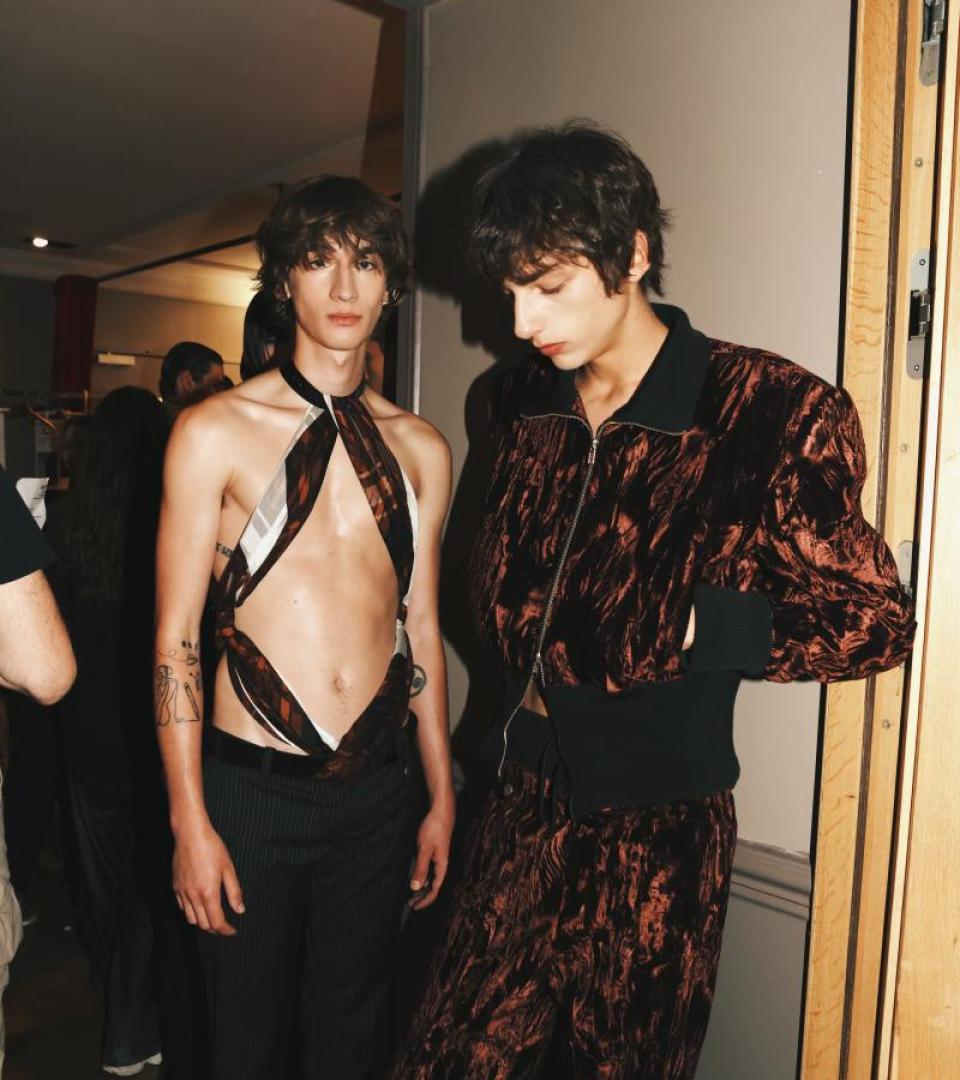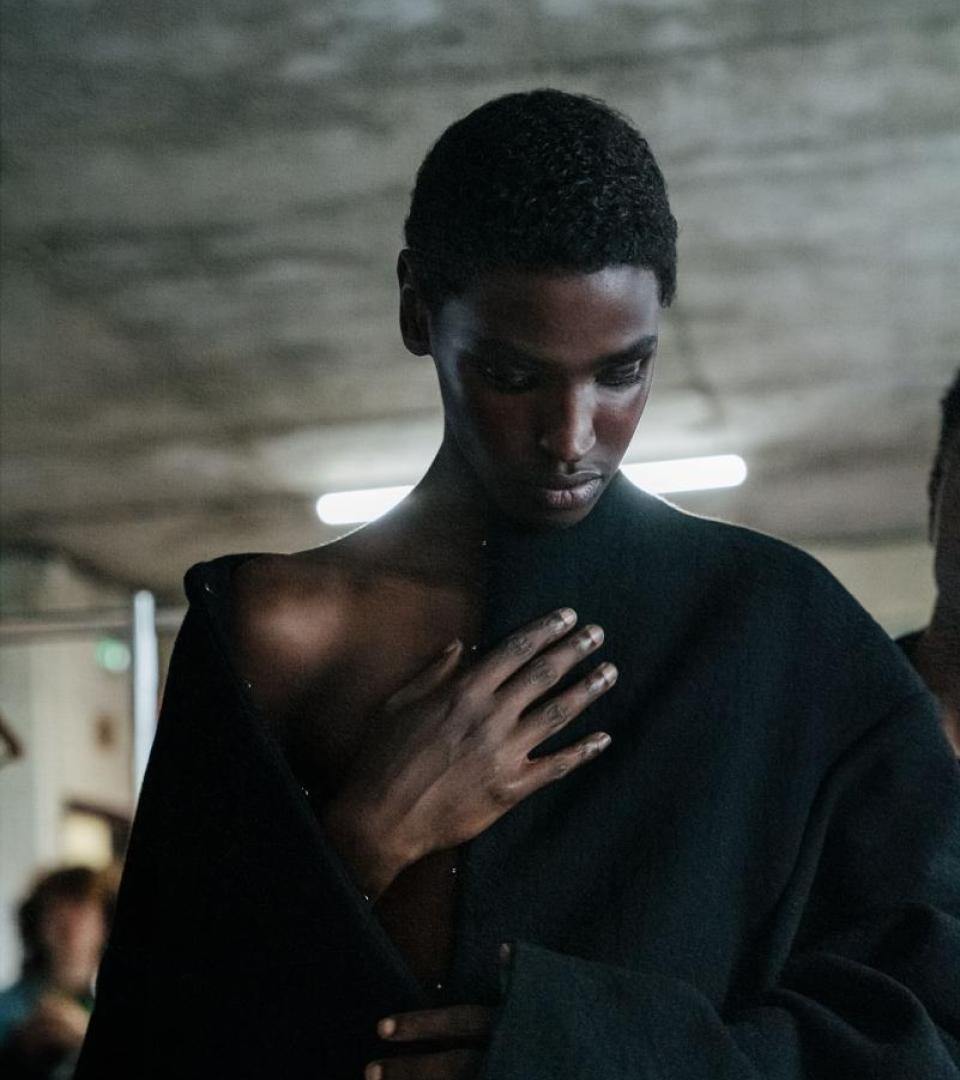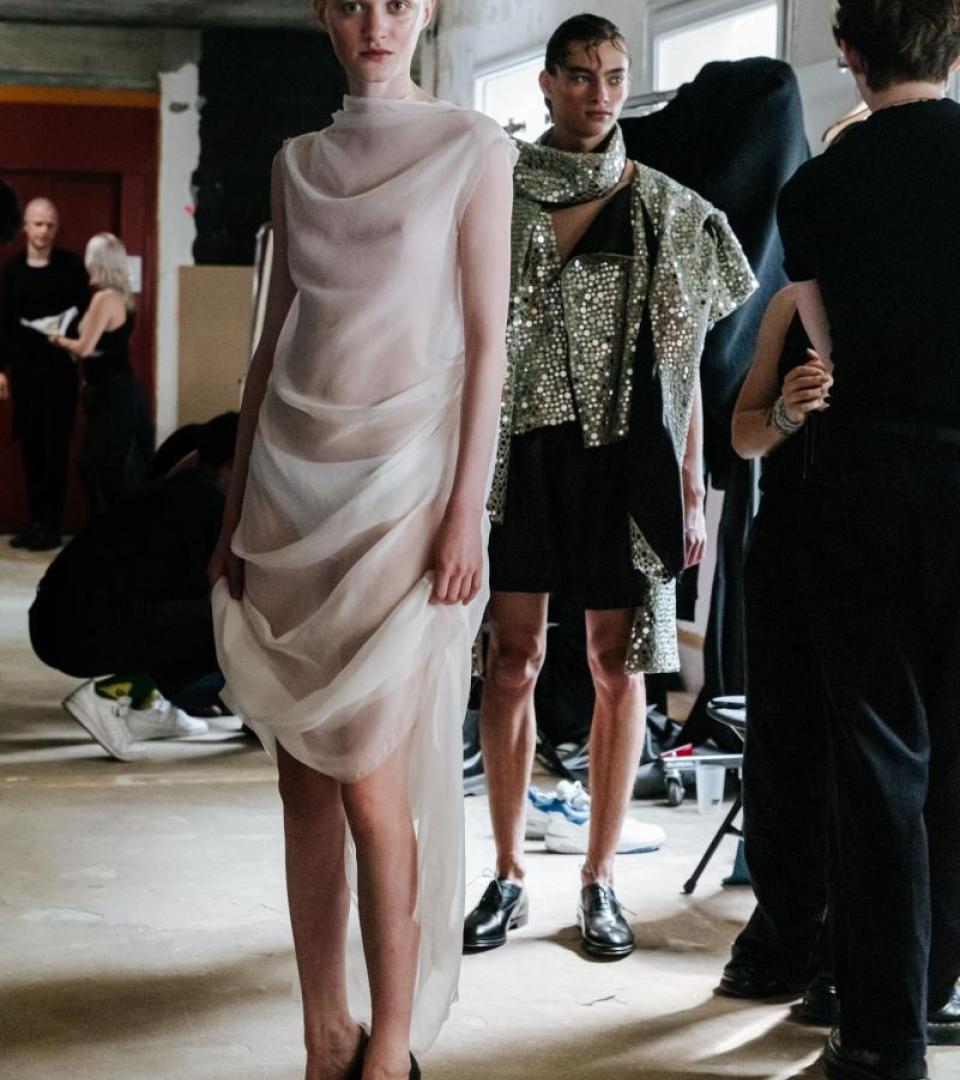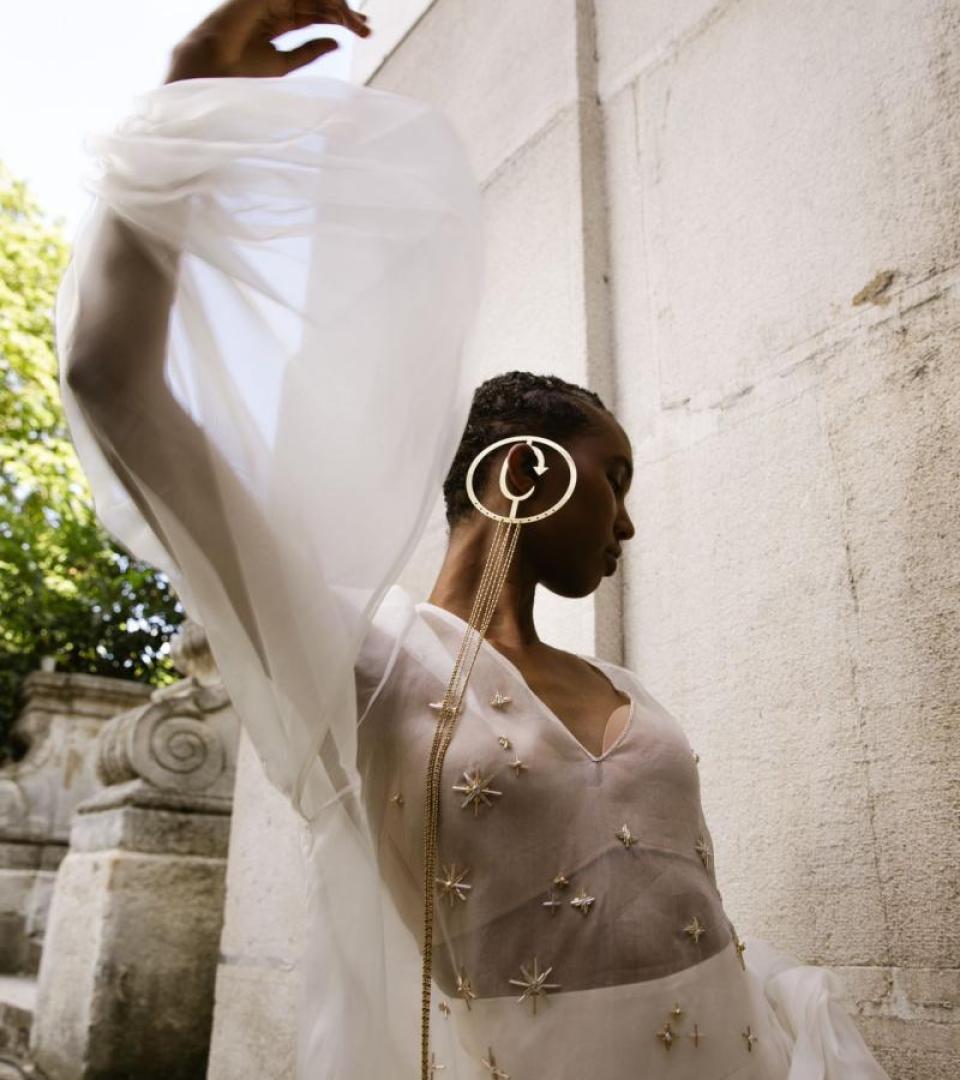Hazy nights filled with electronica, psychedelic clothing, neon, and glow sticks, formed the basis for their Spring-Summer 2026 collection. There is sparkle, glitter, and lurid hues. Unbuttoned shirts reveal toned bodies and vests are printed with AI-generated images from past collections. Neon joggers are cut to the calf. While some looks elicit that familiar sense of revelry, with abbreviated hemlines and ample flesh on display, some more classic silhouettes suggest that the party eventually stops somewhere and reality takes hold. Even when the party's over, you can take the Lazoschmidl spirit with you.
What was the starting point for this collection?
Andreas Schmidt: We always start with a story or biography. Josef was studying in London when we met and decided to start a brand. It was the time of New rave – this glow stick, neon, party vibe. It was also the time that party pictures were first emerging, where you would go on to the computer the next morning to see if your outfit was good enough to stand out. It was before street style existed.
Josef Lazlo: I graduated in 2009 and it was my final collection that we first started our creative collaboration. Now, we’re at the point where we’re both busy with things outside of the label, and we have built this great archive so we wanted to work with that. We went to London and sourced fabric from where I would have gone to source fabrics when I was a student. We wanted to approach it like it was 2008, when you source fabrics, go to shops to look at clothes, and apply it [to our process].
There seems to be a resurgence of club culture in fashion. How does this collection fit into that conversation?
JL: Early Y2K fashion has been buzzing for years now, but there was a glamour [to new rave]. There’s this dirty, sleazy route, but it’s done in an ‘I’m going to look dirty but I’m not’ way. With new rave, even if it was messy and dirty – because we didn’t have Instagram or social media back then – people were more free and there was a glamour to it. We would wear bright colours. I found this gold sequin jacket in a charity shop that I would wear with gold lamé leggings.
AS: Y2K is closer to the ’90s but the late 2000s and 2010s are more connected to the ’80s. There were a lot of references to Culture Club and David Bowie merged with electronic music.
Conversations around AI are growing in fashion. How does it influence the design process?
AS: We use AI in a fun and uncomplicated way. When you think about the AI generation in fashion, you think about grotesque, futuristic, and dark dresses that look like aliens. When we work with AI, it’s about creating patterns and fun prints. Recently, I made a fan zine [to accompany a collection] where I had AI produce a graphic novel based on a romantic vacation story that I wrote. It will be in an exhibition about the use of AI in fashion that will open in Vienna the day before our presentation. For this collection, we used AI to generate images from our own archive, redesigning them to make new images.
How does it feel a decade after first launching Lazoschmidl?
AS: It’s a very consistent storyline that is still relevant. We’ve always been ahead of our times a little bit. Validation is a struggle when you don’t get appreciation for the things that you gave direction to and others do. It’s always the issue of being ahead of your time; you’re first, but the first to follow is the one who gets the reward.
JL: We plant the seed and someone else takes the first. When I look back, I feel very proud. We approached Lazoschmidl as an art project of our creativity. It started as a small, fun project because I was struggling to get jobs after graduating and it developed into something else. We took ourselves from this small Stockholm hub to Paris Fashion Week. We’ve done this on our own; we haven’t had any financial backing or mentorship that could have helped us.
Lazoschmidl’s identity as a queer brand feels particularly vital today. Can you speak to that?
AS: People think that we have achieved a lot, but we’re still not there yet. There’s still not enough freedom of expression. We’re creating change, but we don’t have to push it. Just by designing, we’re creating momentum.
JL: We have the mentality that if we’re doing it, it exists. We never put a specific political agenda behind it. Maybe we should have. But existing is a frontier in itself.
This interview has been lightly edited.



